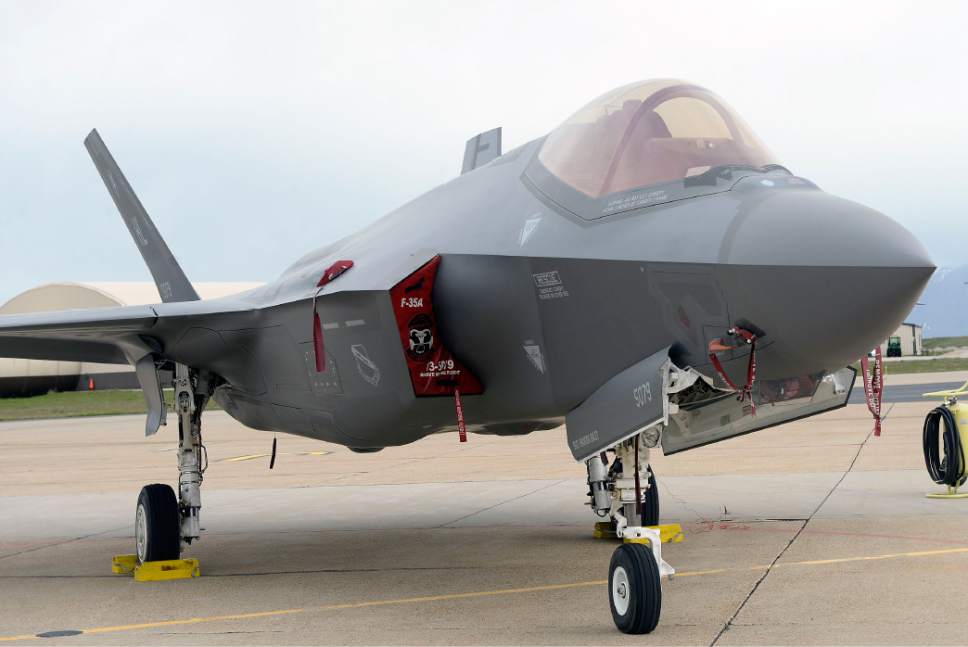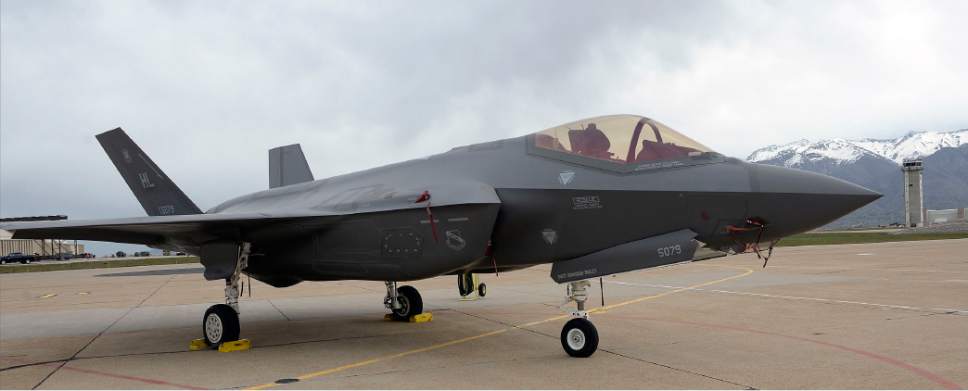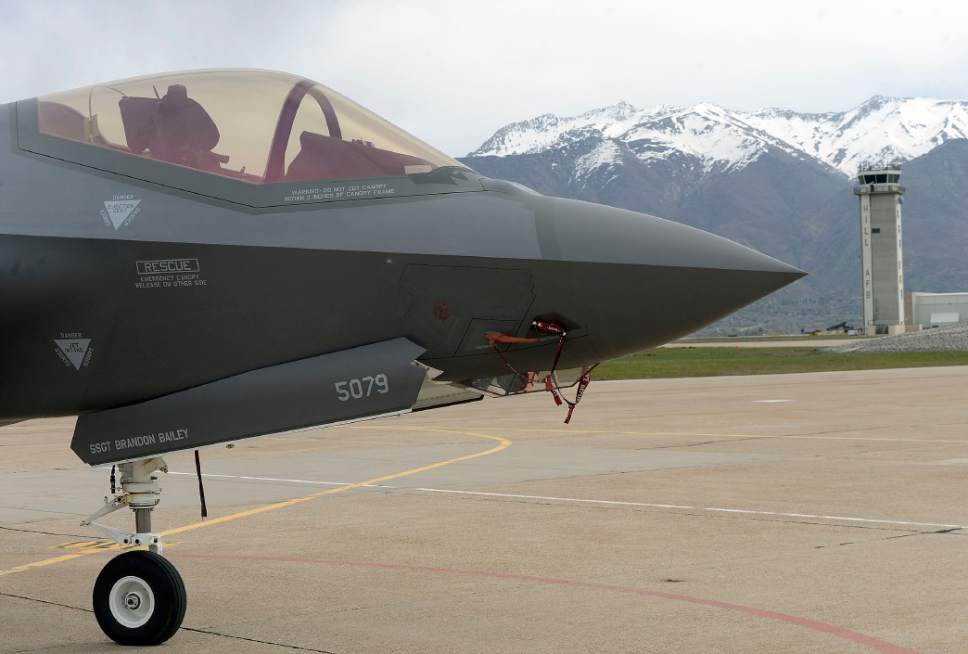This is an archived article that was published on sltrib.com in 2017, and information in the article may be outdated. It is provided only for personal research purposes and may not be reprinted.
The inaugural foreign training mission for F-35 stealth fighters and airmen from Hill Air Force Base went as planned and felt relatively routine, officials said Wednesday.
It is a notable milestone for the next-generation jet, which has faced several major glitches and soaring cost overruns in recent years. While there were a handful of expected technical problems, officials said none were related to the jet's software, one of its biggest stumbling blocks during the development and testing phase.
The three-week training session at Royal Air Force Lakenheath in England — along with short trips to bases in Estonia and Bulgaria — involved eight of Hill's F-35s and about 200 airmen. The deployment, which concluded early last week, was part of the Pentagon's European Reassurance Initiative, started in 2014 to show support for U.S. allies after Russia annexed Crimea from Ukraine.
Airmen practiced operating and repairing the jets and their associated software and logistics programs far from home, Col. David Lyons, 388th Fighter Wing commander, said in a conference call with reporters. Officials brought along a large "spares package" — which they hoped included all the parts and tools they would need to keep the jets up and running.
"All of that really went very well for us," Lyons said. "We didn't have any major hiccups."
About 15 support staff from government contractors including the jet's builder, Lockheed Martin, joined the airmen in Europe to operate the jet's software systems.
A system of computer servers and related equipment, known as the Autonomic Logistics Information System, or ALIS, is essentially the brain of the plane, and must accompany the jets wherever they are deployed. Officials said there weren't any problems with the software, which has previously been plagued with problems that some feared would keep the planes grounded for long periods.
Officials said there were 84 sorties, or training sessions, planned over the three weeks, many alongside British aircraft.
Four sorties had to be called off due to technical issues with the fifth-generation jets. The issues included helmet transmitters that didn't work, a faulty fuel system problem in one jet, and a throttle grip that needed replacing.
"These are your standard fighter [jet] breaks that you would see with any fourth-generation fighter, across history," Lyons said.
Officials said the F-35s had an 87 percent "mission capable" rate over the course of the three weeks. The number describes what percentage of the jets are ready to fly at any given time. Lyons said F-35's reliability could be roughly compared to a 75 percent mission capable rate of eight Hill F-16s, which are currently deployed for training in Spain.
For some young pilots, it was their first time flying in any fighter jet across the ocean, or anywhere outside the United States, said Lt. Col. George Watkins, 34th Fighter Squadron commander. The trip to the United Kingdom took 9 1/2 hours and included multiple mid-air refueling sessions, he said.
"Just taking the jets overseas is a huge learning point," he said.
By late 2019, the base expects its full fleet of 78 F-35As will be in place. It currently has 20 of the fighters, and plans several F-35 training exercises in Utah, alongside aircraft from across the country, over the summer.
Twitter: @lramseth







